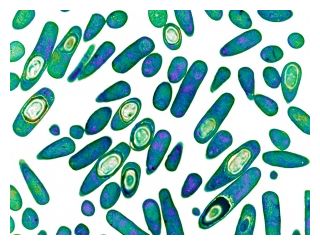
Our last line of defence against hospital 'superbugs' is faltering, with resistance to the antibiotics usually used to tackle intractable pneumonia and urinary tract infections on the rise and spreading across European countries.
The European Centre for Disease Prevention and Control (ECDC) in Solna, Sweden, announced last week that 29 new cases of bacteria resistant to the broad-spectrum carbapenem antibiotics had been reported across a total of six European Union (EU) countries between early October 2010 and the end of March 2011.
The figures coincide with the publication, on 17 November, of a European Commission strategy to tackle antibiotic resistance. The plan sets out 12 recommendations, including strengthening surveillance systems to better track and report cases of resistance, providing advice on the "prudent" use of antibiotics in human and veterinary medicine - including correct dosage - and launching research initiatives focused on better understanding how resistance arises and developing new antibiotics.
Tackling antibiotic resistance "is now critical, with the establishment of resistance to the last line of antibiotics being reported to the ECDC from several European countries for the first time", Marc Sprenger, ECDC director, told reporters at a press conference. "Failure to act will mean that treatment options for patients will be severely limited."
Prescription only
The European Commission's strategy focuses on stamping out inappropriate use of antimicrobials in humans and animals - for example, administration of the drugs for the wrong reasons or incorrectly. In particular, the strategy calls on EU countries to ensure that antibiotics are available through medical or veterinary prescription only. The commission will publish a report by 2015 in identifying progress and shortfalls in member states' efforts to apply prudence to the use of antibiotics.
"The overuse of antibiotics is one of the major drivers of the existence of resistant bacteria," Sprenger told reporters.
The commission also suggests tightening the regulations governing veterinary medicines, including restricting the use of certain new antimicrobials, or ones considered critically important, to humans. In addition, it notes the introduction of a new animal-health law, due in the second half 2012, that will focus on preventing disease and reducing the use of antibiotics.
These measures take a precautionary approach to potential links between the use of antibiotics in animals and the development of resistance in human populations. But the commission stopped short of backing calls from the European Parliament last month to end all prophylactic use of antibiotics in livestock farming. The EU banned the use of antimicrobials to promote growth in farm animals in 2006.
The link between the use of antibiotics in animals and the development of resistant bacteria in human populations is "a very controversial area of science", says Bernard Vallat, director-general of the World Organisation for Animal Health, an intergovernmental organization based in Paris that is responsible for improving animal health.
"Countries that have banned the use of antibiotics to promote growth have done so out of precaution. But there is still no scientific consensus on this. This is why many developing countries are still using them," he adds.
Major animal source "unlikely"
Recent research1 providing one of the most comprehensive epidemiological studies of antimicrobial resistance in animal and human populations only adds to the debate. The study, led by Stuart Reid, a veterinary scientist at the University of Glasgow, UK, found key differences between bacterial communities of the resistant Salmonella Typhimurium strain DT104 collected from animals and humans in the same geographical area and over the same time period. Among 5,200 isolates divided roughly equally between the animal and human populations, the study found 65 different combinations of antibiotic resistance. Of these, 13 were unique to animals, 30 were unique to humans, and 22 were common to both. Of these 22 common profiles, 11 were identified first in the human isolates, compared with 5 identified first in animals, and 6 identified in both at the same time.
While ecologically connected, animals and humans have distinguishable DT104 communities," Reid told Nature. Given that most bacterial communities with similar resistance profiles occur first in humans, the animal population is "unlikely to be the major source" of resistance in human populations, he says.
To further investigate how antibiotic resistance arises and spreads, and to develop new antibiotics, the commission strategy announces a new research programme to be funded through the Innovative Medicines Initiative (IMI) - a public - private research partnership between the European Federation of Pharmaceutical Industries and Associations (EFPIA) and the EU.
Richard Bergström, director-general of the EFPIA, a trade association based in Brussels, told Nature that the IMI would announce a call for proposals worth up to €350 million (US$473 million) in the next few months. Additional funding for research and development on antibiotics will also be available under Horizon 2020, the next iteration of the EU's multibillion-euro research programme for 2014 - 20.
"There is so little research currently being done," says Bergström. The IMI collaboration "will help a lot", but he says that "more incentives" will be needed for businesses because they are unlikely to be able to sell and make money from drugs developed through IMI. "Business will only invest if there is a return," he warns.
References
1. Mather, A. E. et al. Proc. R. Soc. B dx.doi.org/10.1098/rspb.2011.1975 (2011).



Reader Comments
to our Newsletter